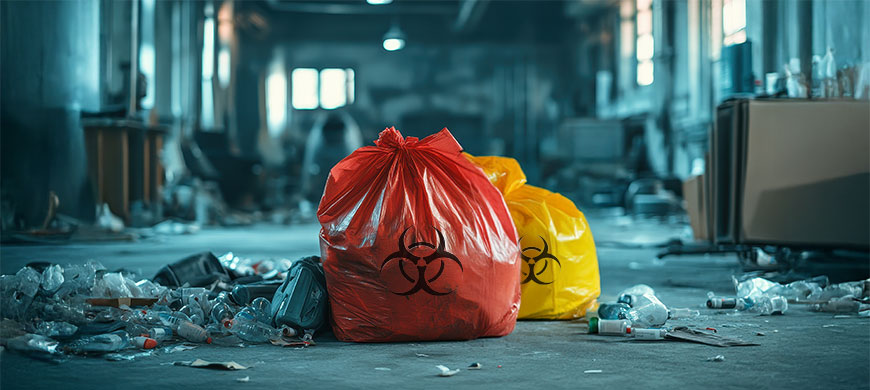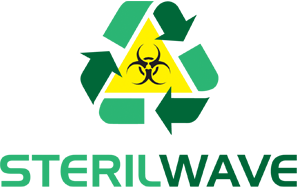Health care saves lives, but it also generates large quantities of medical waste. In many developing countries, the lack of proper infrastructure, funding, and regulations has made the management of infectious and hazardous medical waste a growing concern. The issue is not only a local health risk but a pressing global challenge.
A concerning global picture
According to the World Health Organization, about 15 percent of health care waste is considered hazardous, posing a risk of infection, chemical exposure, or radioactivity. The remaining 85 percent is classified as general non-hazardous waste, but in low-income countries, poor waste segregation often results in a much higher proportion of hazardous material.
The disparities are striking. In 2021, only 61 percent of global health care facilities had basic waste management services, and in fragile settings, this dropped to just 25 percent. A large number of facilities operate without any structured system for separating, storing, or treating infectious waste. The causes are varied: limited investment, weak regulation, lack of staff training, and low awareness of associated risks.
Unsafe practices with serious consequences
In many parts of Africa, Asia, and Latin America, low-temperature incineration remains the most common waste disposal method. However, incomplete combustion of medical waste releases highly toxic pollutants such as dioxins and furans, known carcinogens that also cause developmental and immune system damage. Burning materials that contain heavy metals like mercury or lead results in harmful environmental contamination.
“Poor medical waste practices threaten not only those working in health care, but entire communities,” notes the United Nations Environment Programme in its 2024 Global Waste Management Outlook.
Landfilling untreated medical waste also poses serious risks, especially in areas where informal scavenging is common. People collecting recyclables may be exposed to contaminated needles, infectious fluids, or toxic residues.
According to WHO estimates, unsafe injection practices in 2010 led to 1.7 million new cases of hepatitis B, 0.3 million cases of hepatitis C, and 33,800 HIV infections. Needle-stick injuries remain a common hazard in under-resourced hospitals. Beyond infections, exposure to chemical waste from pharmaceuticals, disinfectants, and broken thermometers can cause poisoning and long-term organ damage.
An expanding health sector and rising waste volumes
As health care access improves across developing regions, more clinics, hospitals, and laboratories are being built. This progress is welcome, but it comes with a hidden cost. The volume of medical waste is increasing rapidly, especially in areas with high population growth.
The United Nations Development Programme reports that in some parts of Asia-Pacific, the volume of hazardous medical waste is doubling every decade, while adequate treatment infrastructure remains rare. Meanwhile, the UNEP projects that global municipal waste generation will grow from 2.1 billion tons in 2023 to 3.8 billion tons by 2050. Medical waste is part of this broader waste crisis, particularly in countries where urbanization is accelerating and resources remain limited.
Health care systems also contribute significantly to global emissions. According to UN data, the health sector is responsible for nearly 5 percent of global greenhouse gas emissions. Incineration, waste transport, and poor treatment methods play a role. Improving waste management is not just a hygiene issue. It is essential to environmental protection and climate resilience.
The path forward: Urgent need for sustainable solutions
Reducing the impact of medical waste in developing countries calls for action on several fronts. First, better waste segregation at the source is essential. Health facilities should use clear labeling and color-coded containers to separate infectious, sharps, pharmaceutical, and general waste. Staff training is a critical component of this shift.
Second, there is a need to transition away from incineration toward non-burn technologies such as steam-based sterilization, microwave treatment, and chemical disinfection. These approaches reduce air pollution and are increasingly recommended by international organizations. Some countries have already implemented pilot projects using sterilwave, supported by international development partners.
Lastly, sustainable progress depends on policy reform and financial commitment. Governments must establish clear regulatory frameworks, allocate resources to build local treatment capacity, and enforce standards consistently. Health care waste should not be treated as a marginal concern but as an integral part of safe, effective, and sustainable health systems.
“Safe management of medical waste is not a luxury. It is a fundamental requirement for universal health coverage and environmental justice,” states the WHO.
As awareness grows and solutions evolve, there is an opportunity to transform medical waste from an overlooked risk into a driver of innovation and sustainability in global health.


